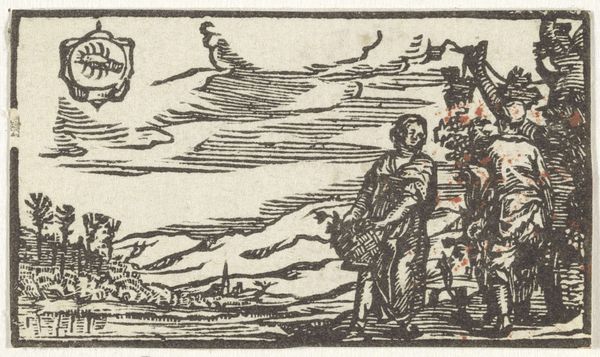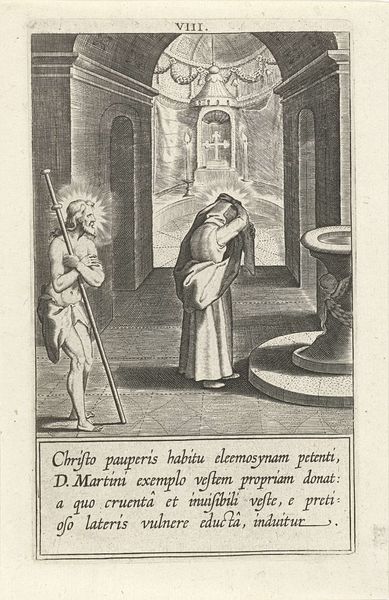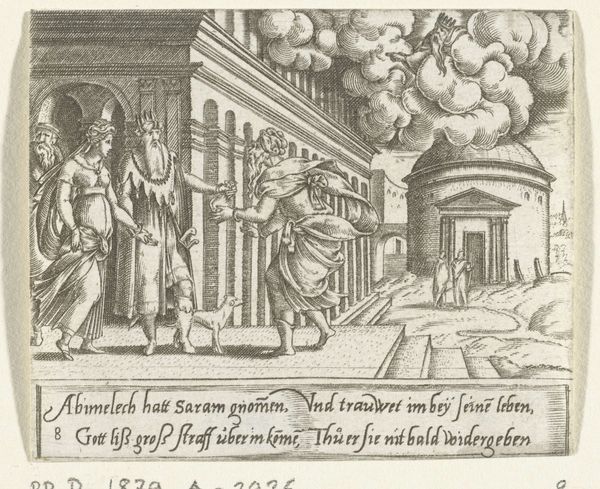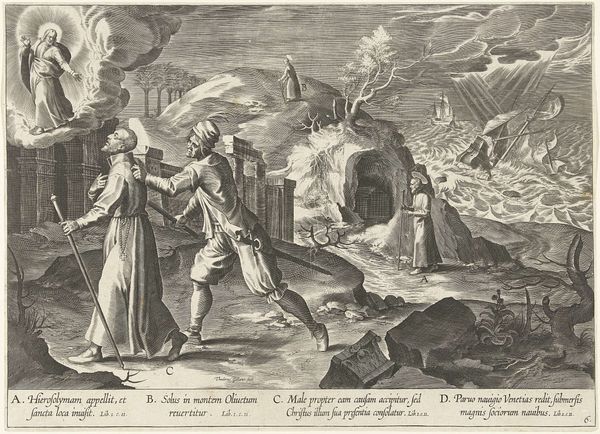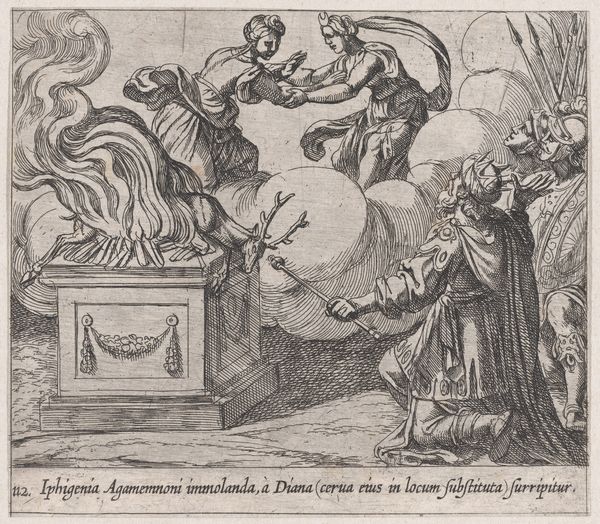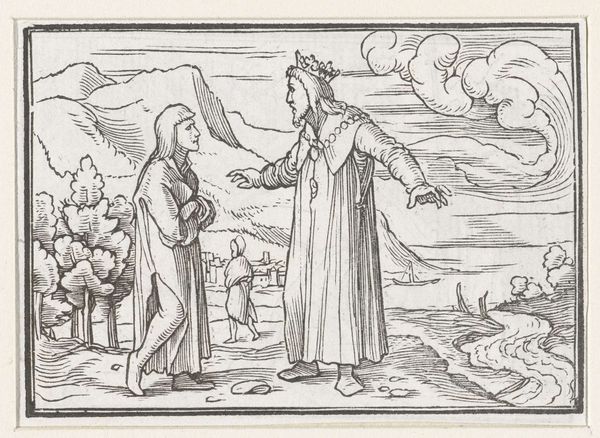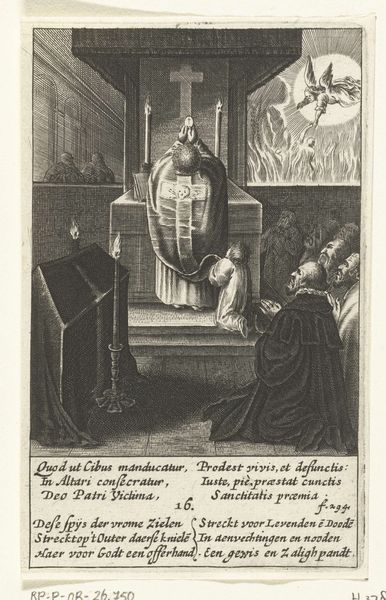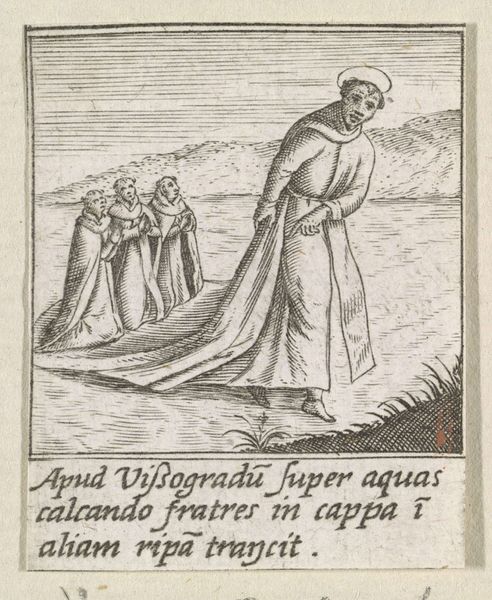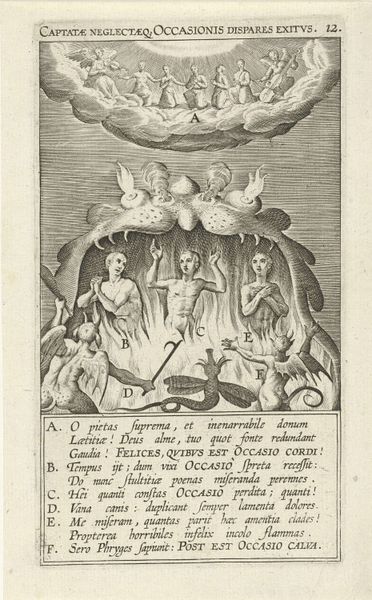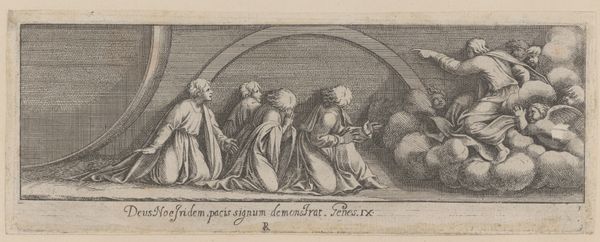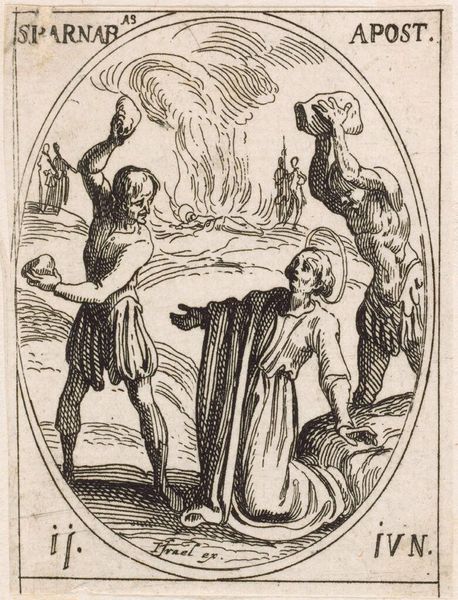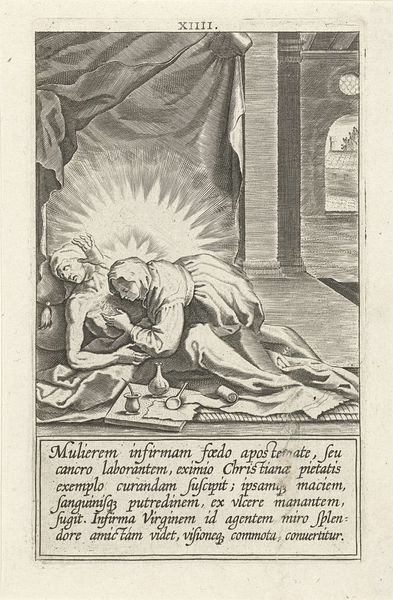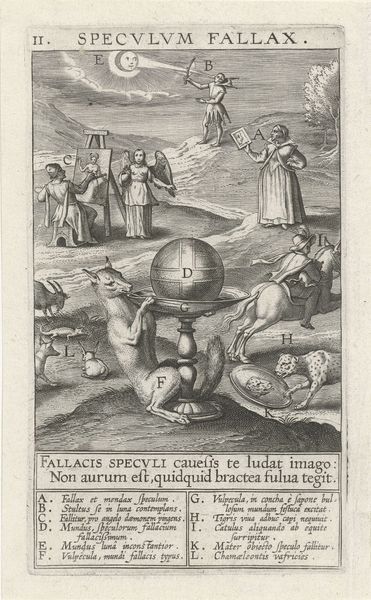
print, engraving
# print
#
landscape
#
figuration
#
northern-renaissance
#
engraving
Dimensions: height 38 mm, width 45 mm
Copyright: Rijks Museum: Open Domain
Curator: This engraving, rendered by Johann Sadeler I between 1595 and 1600, depicts "Saint Hyacinth of Poland Stopping a Storm." It is currently held in the Rijksmuseum. What are your initial impressions? Editor: Stark, quite dramatic in its contrasts. The almost violent downpour on one side opposed by relative calm elsewhere evokes an intense emotional division. A stark visual representation of chaos and order. Curator: Indeed. Observe how the artist uses line. See the dense, parallel hatching to create the storm's torrential rain. How the sheer density and directionality suggest movement and force? Editor: The texture is remarkable for such a small-scale print. And look at the figures. The robes are almost architectural in their pleating, leading the eye upward, accentuating the piety, yes, but perhaps also reinforcing existing hierarchies? Curator: An interesting interpretation! Contextually, we must remember the period, a time of intense religious fervor. These aren’t merely figures, but symbolic actors on a historical stage, reinforcing Catholic doctrine during the Counter-Reformation. The depiction of Hyacinth ending a storm acts as visual propaganda, illustrating divine intervention through prayer. Editor: But look at the flatness of the composition. There's minimal attempt at depth. Doesn’t that, in itself, suggest a conscious attempt to reduce everything to essential forms? Curator: One could also say that it prioritizes symbolic legibility. The reduced depth simplifies the narrative, focusing on the dichotomy between divine power and natural disaster. Every compositional element underscores the theological message. Editor: A message made all the more compelling when viewed through the lens of contemporary concerns, whether natural disasters or abuses of religious power. Food for thought. Curator: It gives a lot to ponder about the power of image, how the form of art reflects its role in our life and cultural understanding.
Comments
No comments
Be the first to comment and join the conversation on the ultimate creative platform.
